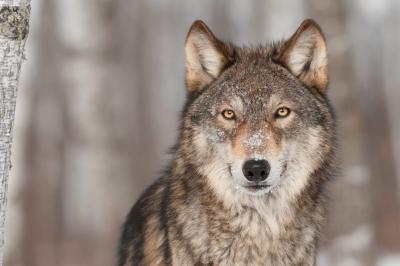Italy’s wolf population bounces back from brink of extinction

ROME — Italy’s wolf population has made a remarkable recovery from the brink of extinction 50 years ago, with a nationwide survey documenting the presence of around 3,300 animals.
The survey, coordinated by the national environmental protection institute (Ispra), was conducted between 2020 and 2021 and found a particularly strong recovery in the Alps, where around a third of the wolf population is located.
Ispra said wolves were found in an area of approximately 150,000 square kilometres, occupying almost all suitable territory in the Italian peninsula. More than 3,000 volunteers and park officials covered around 85,000 kilometres on foot to track the presence of the shy predator.
The presence of wolves was documented by photo-traps on more than 6,500 occasions and confirmed by droppings, footprints, and the carcasses of their prey.
Ispra officials said the availability of accurate data was vital for developing conservation policies and mitigating conflicts with livestock farmers. The latest study was the first to use standardised protocols and to cover the entire national territory.
“Poaching and accidental death [on the roads] continue to kill hundreds of wolves every year, and hybridisation with dogs threatens the genetic integrity of the species,” the Worldwide Fund for Nature (WWF), said.
Piero Genovesi, the head of Isra’s wild animal department, said genetic analysis of wolf droppings found signs of recent interbreeding with dogs in more than 11 per cent of cases.
“The mixing of wolf and dog, which produces fertile offspring, is a very worrying problem,” Genovesi said. “Hybridisation risks compromising the genetic patrimony of the wolf and altering the physiological and behavioural adaptations, the result of long evolution, that have allowed the wolf to survive in difficult times. In short, it could reduce the chances of survival of the wolf.”
Wolves enjoy legal protection in Italy under the 1979 Bern Convention and an EU habitats directive from 1982, and have benefitted from a progressive abandonment of the countryside by humans.
Conflict between farmers and wolves has been reduced over the years by the introduction of electric fences and the employment of powerful guard dogs, particularly the Pyrenean Mountain Dog and the Maremmano-Abruzzese Sheepdog.
A project in the Valle d’Aosta is due to begin testing a special anti-wolf sheep collar next month. The device records heart-beat and sudden movement on the part of a frightened sheep and then emits an ultrasound designed to drive off dogs and wolves.
The growth of the wolf population was not good news for the farmers’ lobby Coldiretti, which said it was time to start protecting the thousands of animals killed every year by wolves and the mountain farmers who risked losing their livelihoods as a result.
pw-cc
© COPYRIGHT ITALIAN INSIDER
UNAUTHORISED REPRODUCTION FORBIDDEN


